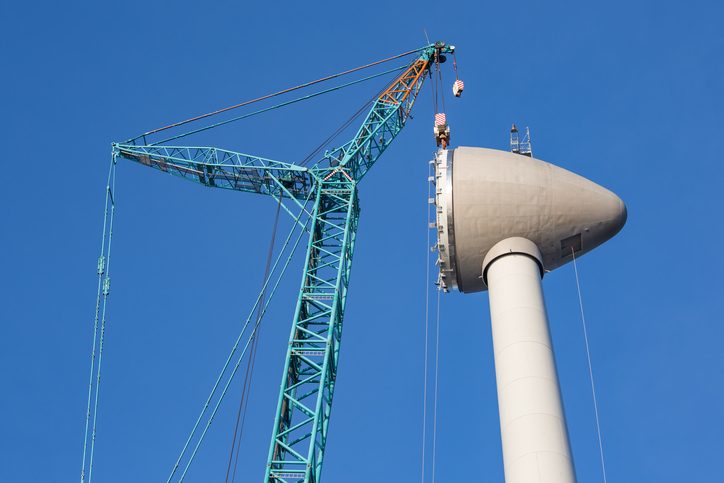Although the federal production tax credit (PTC) has traditionally applied to new installations, the four-year extension of the PTC passed in 2015 has incentivized a number of asset owners to consider repowering or retrofitting existing wind power assets, according to a new report from MAKE.
The report says these asset owners are doing so in order to re-qualify projects under PTC eligibility guidance from the U.S. Internal Revenue Service so that they receive another 10 years of tax credits.
MAKE explains that repowering aging assets creates an opportunity to realize substantial returns from increased annual energy production while deploying significantly less capital than would be required for a new project.
To re-qualify an existing asset, owners must invest 80% of the fair market value of the asset; this is achieved through repowering or retrofitting.
MAKE estimates the total capacity likely to be repowered under this mechanism to be upwards of 6 GW. In addition, this includes a capital investment of more than $2 billion per year.
Given the scale of an “80-20” campaign – where the tower and foundation of a wind turbine are retained, but a new nacelle and blades are mounted – MAKE will use the following methodology to account for such cases in its products and is publicizing it for the sake of transparency, clarity and standardization.
Traditional repowering, which has been practiced predominantly in California – where a large number of turbines were installed in high-wind sites before 1990 – is defined as the complete removal of a wind turbine and its replacement with a modern unit. This includes foundations, towers, nacelles, blades and usually balance-of-plant facilities.
By contrast, MAKE’s methodology for repowering under the current PTC program (80-20 repowering) begins with the understanding of the nacelle as the central energy-producing component of a wind turbine; accordingly, if the nacelle is replaced in its entirety, the turbine is considered repowered, and the market share is assigned to the turbine manufacturer.
The foundation and tower, as non-productive components, may remain unchanged or enhanced if necessary in an 80-20 repowering, the report says.
Selective replacement and upgrade of components within the nacelle – a common strategy regarding older turbines in which the FMV is lower and fewer replacements are required for PTC qualification – will not be considered repowering but, rather, will be “retrofitting.”
MAKE says retrofitted turbines will not contribute to the market share of turbine manufacturers in the year of installation or thereafter. Projects adjusted through a retrofit will not be considered new installations (for the purposes of MAKE’s databases and analyses, except in certain cases).
In these certain cases, retrofitting of components within a turbine may lead to an enhanced capacity rating or rotor diameter, says MAKE.
Such cases will be accounted for in the manner of a traditional up- or de-rating after initial project operation: The changes in capacity will not be considered part of a turbine manufacturer’s annual new capacity, but existing entries within MAKE’s installation database will be updated to reflect the new figures. In addition, MAKE’s market outlooks will be adjusted to reflect cumulative totals.
As an example, a retrofit of components within a GE 1.5 MW turbine with 77-mter rotor that increases nameplate capacity to 1.6 MW and rotor diameter to 82.5 meters would be reflected in the “capacity,” “turbine capacity” and “turbine model” fields of the host project’s line in MAKE’s installation database.




